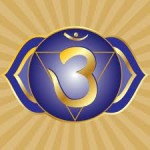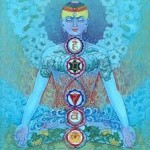 Welcome to the last newsletter of the year from Inner Sanctum Yoga. It felt right that we concluded the year with the completion of our subtle energy practice by combining asanas from each chakra in one lesson. We substituted our traditional yoga nidra with a Kundalini colour meditation, which was very much enjoyed by all.
Welcome to the last newsletter of the year from Inner Sanctum Yoga. It felt right that we concluded the year with the completion of our subtle energy practice by combining asanas from each chakra in one lesson. We substituted our traditional yoga nidra with a Kundalini colour meditation, which was very much enjoyed by all.
As a little take-home practice we learned the ‘magic 7 breaths’, using each finger of our hand to guide us forward and back. Remember that the Ujjayi breath (throat friction) or the AUM-breath on exhalation is a wonderful way to invoke the body’s relaxation response, particularly during the
hectic Christmas period.
The last class of the year will be a lovely restorative class, similar to the one we did at the end of last term, in which we used all the available props and cushions to get that ‘complete relaxation experience’.
Below is a brief summary of our subtle energy system practice in an easy to read diagram. With the help of the series of newsletters on the chakras, you can now practice some personal energy healing/boosting that suits your particular state on a given day. The diagram could also assist you with your personal meditation practice.
| Chakra and Colour |
Representing | Action affirmation | Asana | Breath | Mudra |
| Sahasrara (Violet) |
Higher, spiritual self | I understand | Headstand | Jyoti (energy visualization breath) |
Prana mudra (feeling the energy of all chakras) |
| Ajna (Indigo Blue) |
Intuition and knowledge | I see | Balancing/focus poses | Nadi Shodana (balancing breath) | Shambavi mudra (eyebrow gazing) |
| Vishuddhi (Sky blue) |
Clarity of speech (necessary, kind & true) |
I speak | Poses involving the neck, shoulders and throat | Ujjayi (throat friction) |
Shunya mudra (for ear problems and travel sickness) |
| Anahatha (Green) |
Love and compassion for self and others | I love | Chest opening and back bending poses | Bhramari (humming bee) |
Hridaya mudra(for a healthy/loving heart) |
| Manipura (Yellow) |
Motivation, drive/ digestive fire | I do | Twists and core strength poses | Kapalbathi (breath of fire) |
Solar mudra (symbol for personal power) |
| Swadhisthana (Orange) |
Creativity and sensuality/ Relationships |
I feel | Hip openers | Yoni mudra ( symbol for fertility and creativity) |
|
| Mooladhara (Red) |
Grounding in the material and physical world | I am/ I exist | Standing poses | Abhaya mudra (symbol for strength and courage) |
Wishing you all a wonderful summer break and looking forward to seeing you again when the schools go back around the 28th of January. I will send a reminder email of our starting day a week before.
May the benefits of your practice stay with you and extend beyond you.
Namaste,
Ernestine














 Shambavi
Shambavi

 asana
asana





 Virabhadrasana 1,2,3
Virabhadrasana 1,2,3